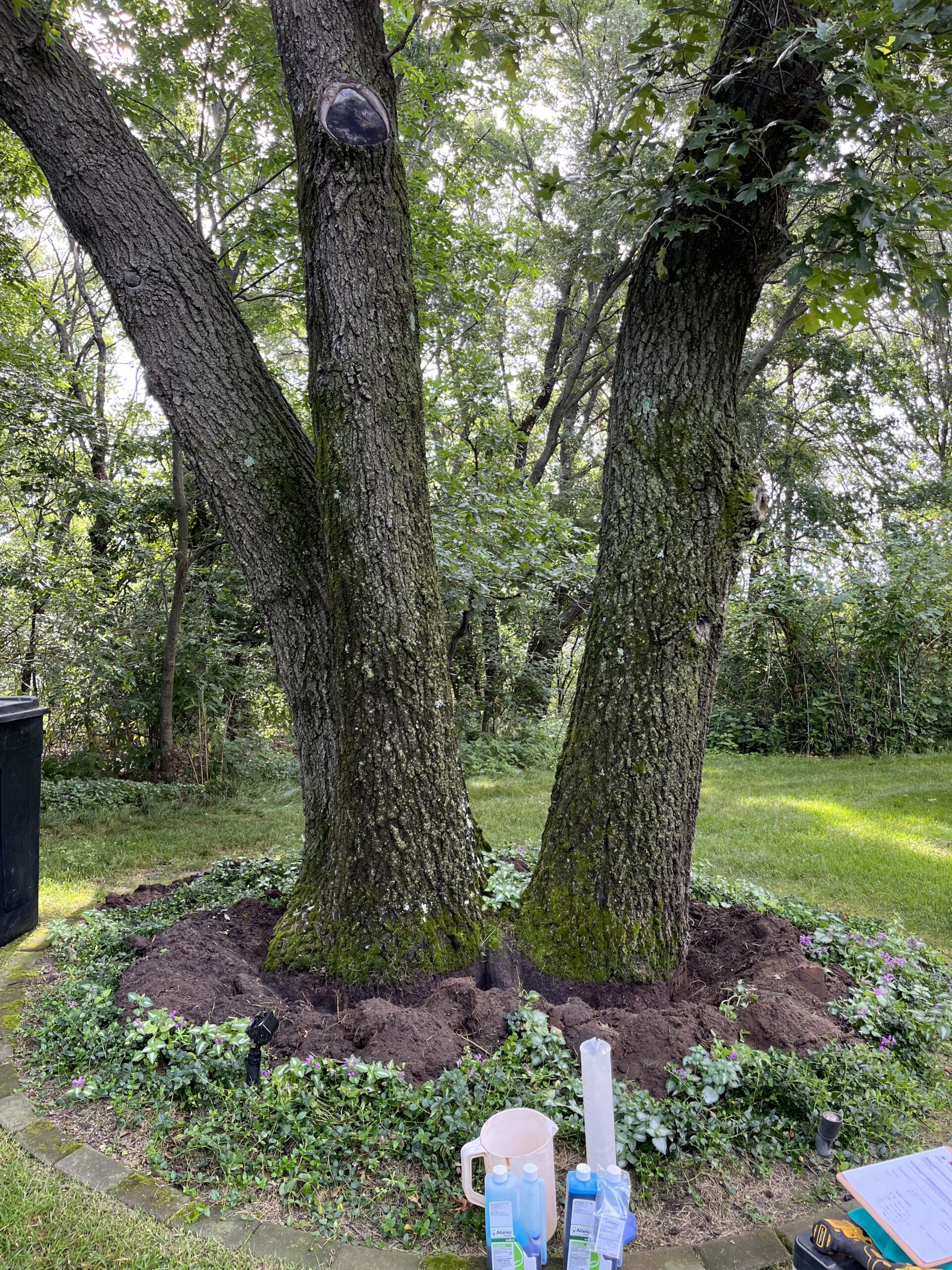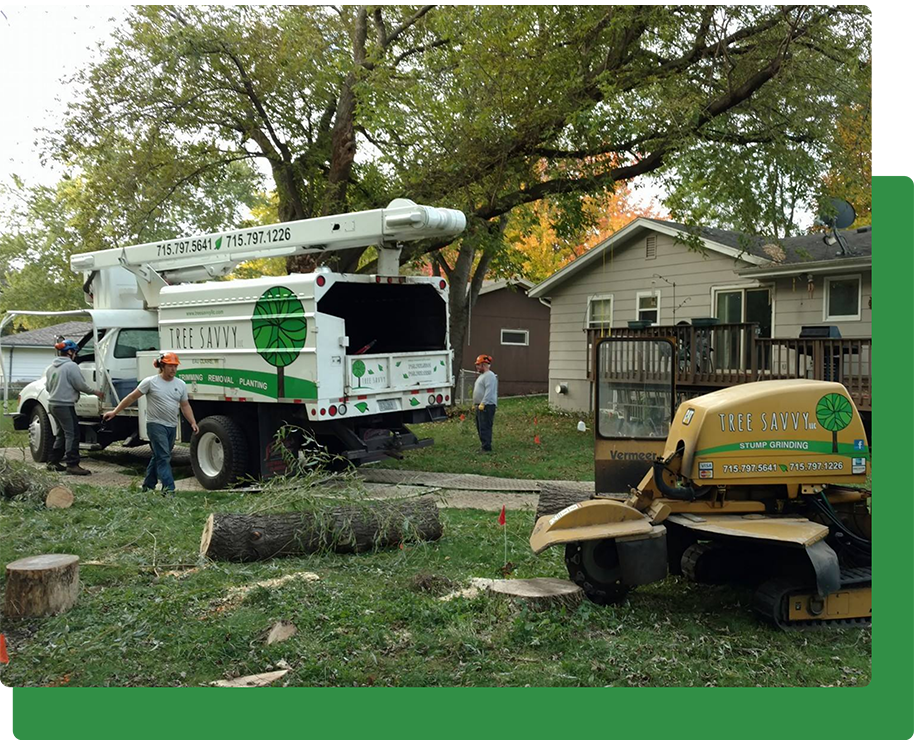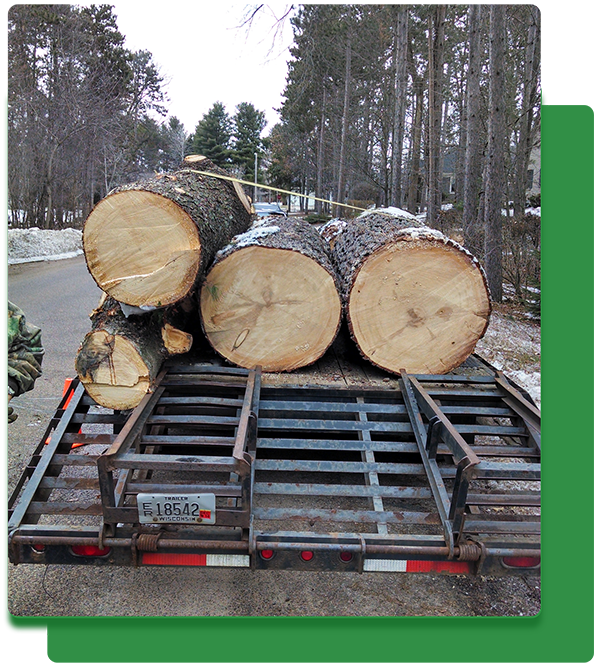
Oak Wilt
Oak Wilt has become one of the most serious disease threats in our area. It is a vascular disease in Oak trees caused by the fungus Ceratocystis fagacearum, also known as Britziella fagacearum. Although susceptibility varies, the fungus invades and disables the water-conducting system in Red, White, and other Oak species. Red Oaks typically die within 4 to 6 weeks of initial symptom development, whereas White Oaks might take 1 to 6 months to defoliate and die, or may even survive outright.
Oak Wilt can spread from infected to healthy trees both above and below ground, making it especially difficult to combat and control. The disease is most often spread through interconnected and grafted root systems between neighboring trees. Sap feeding beetles (Nitidulidae) are responsible for most of the above ground transmission of Oak Wilt, but bark beetles (Scolytidae) have also been reported to contribute to the spread of the disease.

Signs of Damage
The signs and symptoms of Oak Wilt are somewhat similar to other fungal diseases affecting Oak trees. Unfortunately, once symptoms present themself in Red Oak trees, it is too late to save the infected tree. The same is not the case for White and other Oak species. The primary symptom of Oak Wilt is the wilting of leaves and defoliation. More specific signs of damage include:
- Browning begins on the margin of the leaf and moves inward, with a distinct line between dead and living tissue
- Leaves typically fall before they have completely browned.
- Leaf wilting begins at the top of Red and Pin Oaks, and progresses down the canopy
- Leaf wilting in White and Bur Oaks is less uniform, and may occur on branches scattered thought the tree
- Streaking of the sapwood, beneath the bark
- Presence of fungal spore mats on Red and Pin Oaks, resulting in the bark to split open

Means of Mitigation
The first and most important step in managing an Oak Wilt infestation is prompt diagnosis. While a syptomatic Red or Pin Oak cannot be saved, early identification can help prevent the spread of the disease to neighboring Oak trees. For Oak Wilt affecting Red Oak trees, Tree Savvy recommends:
- Removing the infected (primary) tree
- Removing the closest group (secondary) of trees
- Trunk injection of fungicide (Alamo) of asymptomatic Red oaks located further away from primary infection
White and Bur Oak trees can be treated preventatively or therapeutically, and therefore a trunk injection of fungicide (Alamo) would be recommended for infected trees and those in close proximity to an active infection. That said, only those trees (White and Bur) that display less than 30% canopy as a result of Oak Wilt should be treated. Treating trees with greater than 30% canopy loss may reduce the success rate of treatment.
Other treatment options and mitigation practices that can be beneficial include:
- Soil-applied insecticide (Xytect 2F) to manage secondary insect pests
- Trunk injection of insecticide (Mectinite) to manage secondary insect pests
- Only prune Oak trees during the dormant season (winter)
- Do not transport infected wood
- Remove the bark of Red Oaks that are being used as firewood, or seal the pile with plastic for one year to kill the fungus and prevent contaminated beetles from escaping
- Physical disruption of the root grafts between infected and healthy trees (trenching.) Note: Tree Savvy does not offer this as a treatment option
